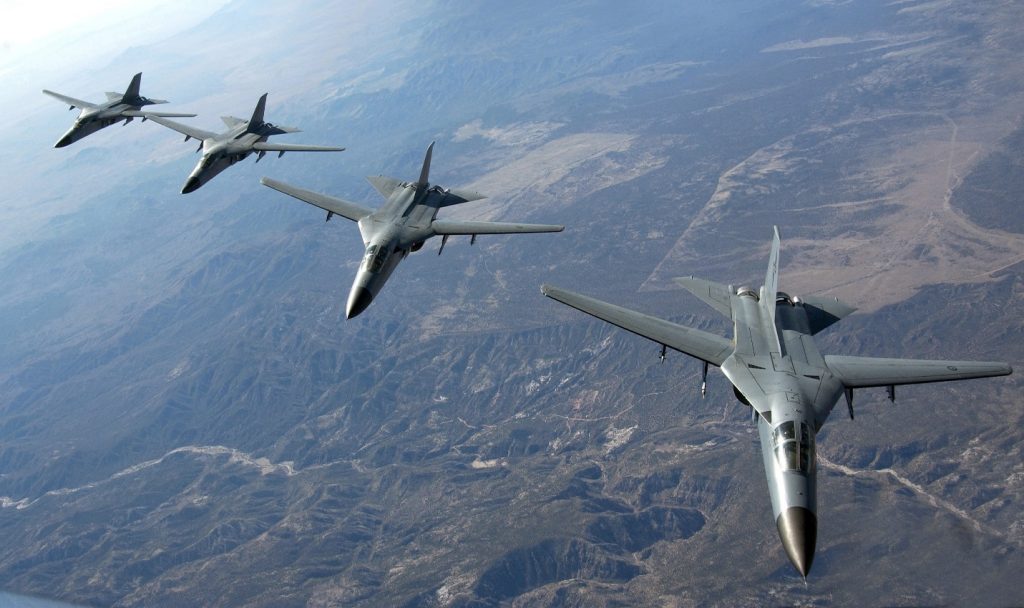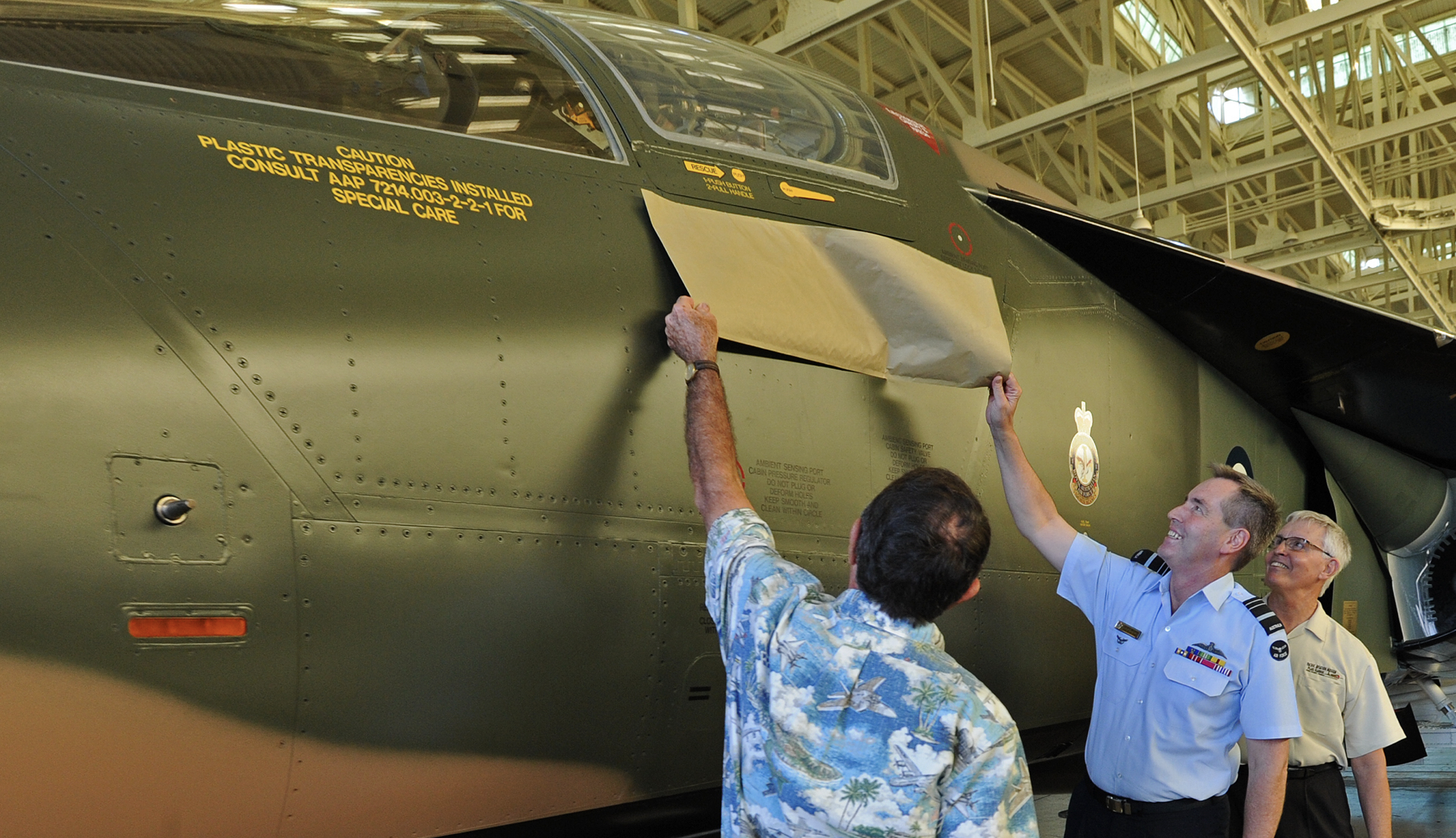Deterrence and Long-Range Strike: The Australian Case
The Chinese have been conducting economic and political warfare against Australia for several months. Now the Chinese are directly threatening Australia with a military strike. A G-7 statement about China is nice, but we have suggested that the Biden Administration do something more concrete with regard to deterrence, namely, to fly two B-2s into Northern Australia as part of an enhanced support to our core ally and to provide a concrete contribution to escalation control,
The Australian government has clearly indicated that it will build up its long-range strike inventory. But the question is when, how and with what deterrent impact?
We recently discussed this question with Air Marshal (Retired) Geoff Brown, Chairman of the Williams Foundation. Brown as a former F-111 operator directly experienced the impact of long-range strike, and Ed has experienced the F-111 during his time in the air in Vietnam when flying his F-4. The F-111 fighter-bomber entered the RAAF fleet into service in 1973 and were retired in 2010.
Brown underscored how he saw the relationship between deterrence and long-range strike. He sees long-range strike as a key element within the future ADF tool kit but pointed out that various types of long-range strike have variant deterrent impacts. If one is fighting a large-scale kinetic war, then firing long-range missiles from under the maritime or land domain are clearly a key part of the engagement effort.
But they are not as agile or flexible as a deterrent as is a long-range bomber.

This is how Air Marshal (Retired) Geoff Brown put it:
“I think long range strike is about trying to keep stability in a crisis situation. And if you’re going to use it as a deterrence. It’s got to be responsive, it’s got to be potent, but you’ve also got to be able to signal that you can use it.
“One of the advantages of a manned or unmanned bomber is that it’s much easier to signal in a crisis period than if you’re trying to launch strike from submarines. Land based strike missiles tend to be sort of a binary approach.
“One can use the strike fighter fleet as well but the problem you’ve got with strike fighters is you’ve actually got to get them closer to the area of interest or inside the area of operations.
“They can look very offensive to somebody you’re trying to deter. And it actually could have the opposite effect of what you’re after.
“Whereas the long-range bomber is flexible. You can probably keep it safer than most other forms of strikes.
“If you end up in a hot war, all options are good, whether it’s cruise missiles or land based. But from a pure deterrence point of view, I think the bomber’s got some significant advantages. Crisis management is a skill set which has atrophied since the end of the Cold War. Because the advantage we’ve had since the end of the Cold War is that nobody’s had the ability to hit us back. We have been able to fly strike airplanes from carriers or close land biases, and they not held at threat, but I think in upcoming operations, that’s changed. I think the closer you are to the fight, the more at risk those assets will be.”
“I think that’s the difference between a bomber and everything else, is that you do have that ability to signal. I think in any sort of crisis, everybody’s going to want to solve the crisis before you end up in a nuclear war. You need a potent conventional capability which has strategic weight to play in such a crisis situation.”
“The thing that people forget is this isn’t always about objective reality. It’s really about what’s in decision makers beliefs and their perceptions and their expectations. And I think that’s what people miss in the real advantage and flexibility of bomber aircraft over all the other strike options to influence the adversary’s perceptions. They’re a tremendous signaling device that actually makes people think about what they’re about to do.”
“In the end, you actually don’t want to fight the war. You want stability. You can’t let the other guy think that he’s actually got a chance at getting an advantage. You’ve really got to attack that belief and his perceptions with capabilities that have strategic weight.”
Air Marshal (Retired) Brown noted that our proposal of sending B-2s on a rotational basis to Northern Australia made a lot of sense, notably as a near term contribution, and laying down a foundation for the evolution of ADF capabilities going forward. According to Brown: “This is quite doable. A lot of the infrastructure improvements we’re actually doing in the north would support that sort of deployment anyway, it’s not as though we’re not ready to do it.”
There is a debate going on in the American defense community over whether the focus of effort should be upon build out of capabilities to operate close to China and inside their weapons engagement zone, or whether to focus on dominating the blue water maneuver space and enhancing long-range strike to go into the inside engagement zone.
Brown’s insights remind those engaged in this debate that this is about deterrence, and deterrence of a nuclear power. And with the United States and its allies facing three nuclear powers in the Pacific, being able to have a credible deterrent force, that is one able to signal without triggering World War III certainly makes sense to us.
Featured Photo: From left, Pacific Aviation Museum Board President Clint Churchill, Air Marshal Geoffrey Brown, Royal Australian Air Force Chief of Air Force and Museum Executive Director Kenneth DeHoff unveil an RAAF F-111C at Pacific Aviation Museum, Ford Island, Hawaii, Nov. 23, 2013. The aircraft was marked with Brown’s name, the plane’s former pilot who played a key role in the development and modernization of the F-111 fleet for the RAAF. Both the U.S. and Australia continue to look for areas where it would be mutually beneficial to deepen their longstanding alliance in order to minimize strategic gaps in the Asia-Pacific region, improve air force-to-air force interoperability, and share responsibility for leading robust multi-lateral operations. (U.S. Air Force photo/Tech Sgt. Jerome S. Tayborn/Released).
An earlier version of this article was published on Breaking Defense on June 21, 2021.
Also, see the following:
Australia Under Attack from China: How the U.S. Can Provide a Near Term Response

